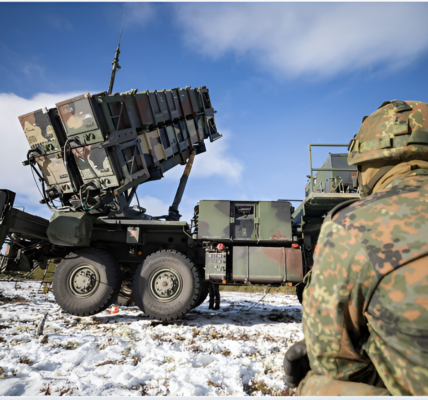
In the world of defense strategy, the wisdom of prioritization is often emphasized. Frederick the Great once said, “Little minds try to defend everything at once, but sensible people look at the main point only; they parry the worst blows and stand a little hurt if thereby they avoid a greater one. If you try to hold everything, you hold nothing.” This sentiment rings true, especially when considering the U.S. Defense Department’s approach to global security threats.
The 2022 National Defense Strategy (NDS) clearly identifies China as the United States’ top strategic priority, while Russia is viewed as a secondary security threat. However, as the war in Ukraine continues, pouring substantial U.S. resources into the conflict, one may wonder: is this a failure of prioritization, one that could weaken efforts to counter China? In reality, the Ukraine war is playing a paradoxical role. Rather than detracting from U.S. defense strategy, the ongoing conflict is enhancing the Pentagon’s capability to outpace China and prepare for a potential Taiwan crisis.
The War in Ukraine: A Testbed for Future Capabilities
Russia’s unprovoked invasion of Ukraine in 2022 has sent shockwaves through Europe, triggering a global security crisis. For the U.S., supporting Ukraine is not just a moral imperative—it’s also a strategic decision. As Ukrainian President Volodymyr Zelensky aptly stated, U.S. assistance is an “investment” in global stability. By helping Ukraine defend itself, the Biden administration is not only countering autocratic aggression but also weakening Russia’s military capability, which serves long-term U.S. interests.
Importantly, U.S. support for Ukraine is providing vital lessons that directly apply to a potential conflict in the Indo-Pacific region. The experience of supplying weapons and intelligence to a partner nation embroiled in conflict builds the expertise necessary for a similar scenario in Taiwan. This synergy between the two theaters could prove invaluable for future U.S. operations in Asia. By institutionalizing these lessons, the Pentagon can enhance its capacity to deter Chinese aggression and prepare for contingencies related to Taiwan.
Tradeoffs Between Ukraine and Taiwan
The 2022 NDS underscores China as the primary strategic competitor for the U.S., while Russia is deemed an “acute threat” that requires attention. The U.S. has committed over $32 billion in security assistance to Ukraine, including military equipment, training, and sustainment. The costs are significant, with more U.S. troops stationed in Europe to support the war effort. This has led some critics, particularly China hawks, to question whether resources devoted to Ukraine are diverting attention from the more pressing issue of China’s ambitions in Taiwan.
These critics argue that U.S. military aid to Ukraine could directly compete with efforts to bolster Taiwan’s defense capabilities, especially when considering that much of the weaponry provided to Ukraine—such as air defense systems and unmanned aerial systems—would be vital for Taiwan’s deterrence. But a closer examination reveals that this concern overlooks how supporting Ukraine is enhancing the Pentagon’s ability to support Taiwan in the future.
While the U.S. is certainly engaged in a tradeoff—allocating resources between Ukraine and Taiwan—the broader picture suggests that the war in Ukraine is not hindering, but rather accelerating, U.S. capability development. As Ukraine’s defense infrastructure adapts under the pressure of war, so too is the Pentagon learning invaluable lessons about speed, adaptability, and integration of advanced technologies that will be crucial in any future conflict, including one over Taiwan.
Innovation at War
War is often a crucible for innovation, offering space for ideas to flourish and processes to evolve. For the U.S. military, the ongoing conflict in Ukraine is creating such a space. Historically, the Pentagon has struggled with integrating cutting-edge technologies into its capabilities, often bogged down by bureaucratic hurdles, acquisition bottlenecks, and cultural resistance. However, the urgency of war demands rapid solutions, which have prompted the Department of Defense to embrace new technologies and adopt lessons from the commercial sector.
One of the most important lessons emerging from the war is the ability to innovate on the fly. As the U.S. continues to provide support to Ukraine, the military is gaining real-world experience in the deployment and integration of advanced weapons systems. This hands-on experience accelerates learning and helps the Pentagon separate effective technologies from those that may not perform as expected. Moreover, this is happening in real-time, providing a faster feedback loop than the traditional, slower pace of weapons development.
Accelerating U.S. Capability Development
As militaries around the world, including China’s, observe the war in Ukraine, there is growing recognition that the future of warfare will be defined by adaptability, technology, and speed. The Pentagon is not merely observing; it is actively engaged, learning valuable lessons from Ukraine’s battlefield. U.S. military planners are evaluating what works in real-time, improving the ability to scale up successful technologies and discard less effective ones.
These lessons will be crucial for future conflict scenarios, particularly in the Indo-Pacific region. While China focuses on its ambitions in Taiwan, the U.S. is accelerating its own modernization efforts. The war in Ukraine, in all its complexity, is a testing ground for the U.S. to refine its strategic and technological capabilities. This experience will ultimately serve to strengthen U.S. military power, not just in Europe, but also in Asia, enhancing its ability to deter or confront Chinese aggression.
Conclusion
The ongoing war in Ukraine is shaping U.S. defense strategy in ways that extend beyond the immediate threat of Russian aggression. While prioritizing China remains the ultimate goal of the 2022 National Defense Strategy, the lessons learned in Ukraine are enhancing the Pentagon’s capabilities, driving innovation, and ensuring that the U.S. remains ahead of its strategic competitors. Rather than detracting from the focus on China, the war in Ukraine is providing a unique opportunity to accelerate military modernization and to prepare for the challenges of the future, particularly in Taiwan. By institutionalizing these lessons, the U.S. can secure its position as the world’s leading military power in an increasingly complex global landscape.





